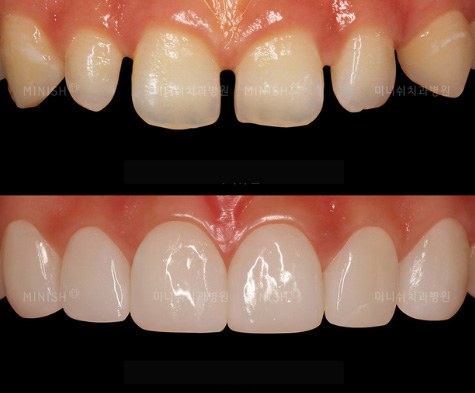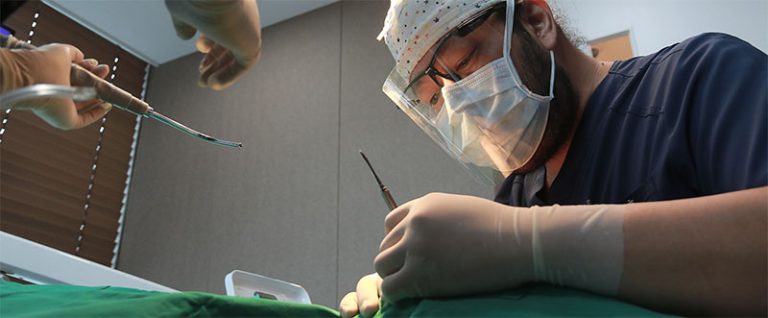How To Fix Front Teeth Gap Without Braces in Teeth
It’s better to have white, well-aligned teeth. Your luck may slip through the gaps between your teeth.
Are you concerned about your gap between teeth? In this article, we are going to talk about the causes of gap in teeth, and possible treatment options for gap in teeth. In phrenology, people often talk about good physiognomy or the correlation between facial features related to wealth. Even if you don’t believe in the old saying, many people think the gaps between teeth are a major concern. Even when you smile, you may not be able to smile openly or you may even develop habits of covering your mouth with your hands. You may also have problems with your pronunciation. In terms of oral health, dental cavities and gum diseases can easily occur, so it is recommended to improve the gaps between teeth for oral health. Let’s find out what causes this problem and ways to solve it.

Contents
Understanding the Causes of Front Teeth Gaps
A gap between the front teeth, medically termed as “diastema,” is a common dental issue in both children and adults. Many people embrace this as part of their unique appearance, while others may feel self-conscious or are concerned about dental health issues associated with it. This article aims to provide an in-depth understanding of the causes of a front teeth gap and its impact on health.
Causes of Front Teeth Gap
Diastema can result from several factors, among which the most common are:
- Genetics: If either of your parents has a gap between their front teeth, it’s likely that you may inherit this trait due to genetic predisposition.
- Mismatch between Teeth and Jaw Size: When the size of the teeth doesn’t match the size of the jaw bone, gaps can appear. It happens because there is too much room in the mouth, causing the teeth to spread apart.
- Habitual Actions: Certain habitual actions like thumb sucking, tongue thrusting, incorrect swallowing reflexes, or excessive use of pacifiers during childhood can result to gaps. These habits exert pressure against the front teeth, leading them to shift.
- Gum Disease: Periodontal disease can lead to tooth loss and cause gaps. When the gums are weakened due to infection, teeth can become loose, leading to gaps.
- Missing Teeth or Tooth-size Discrepancy: If you’ve lost a tooth or have smaller-than-average teeth, this can leave extra space and cause a gap.
- Overdevelopment of Frenulum Labii Maxillaris: If the frenulum labii maxillaris (a band-shaped wrinkle in the inner part of the upper lip) is overly developed, the gums form wrinkles between the teeth and eventually, the teeth cannot stay in place. In this case, part of the frenulum labii maxillaris must be removed to find the alignment of teeth.
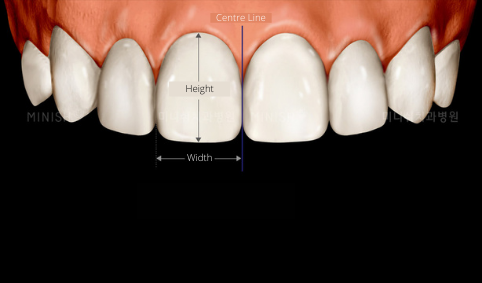
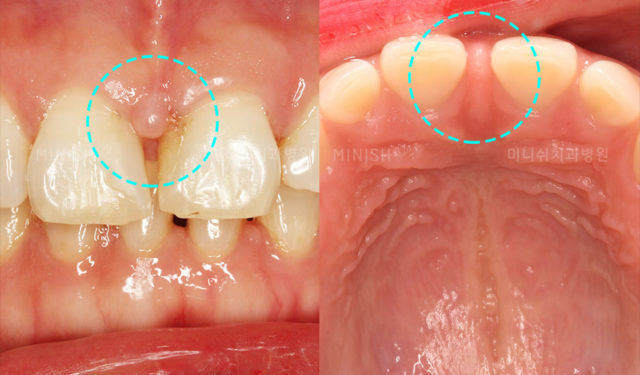
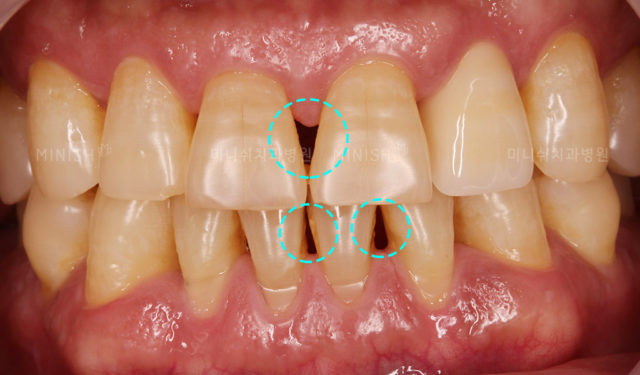
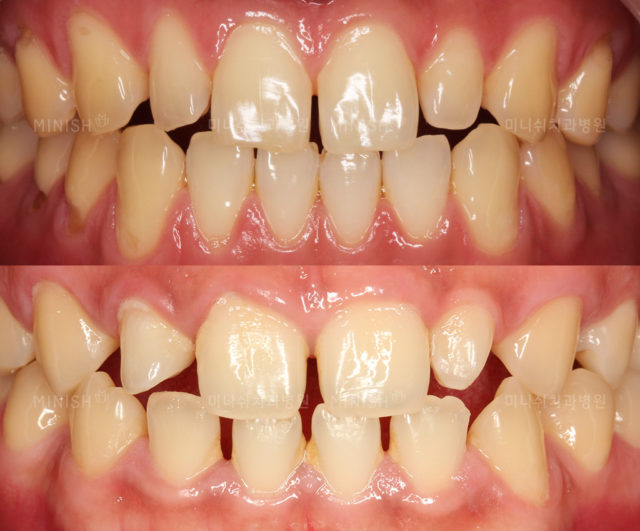
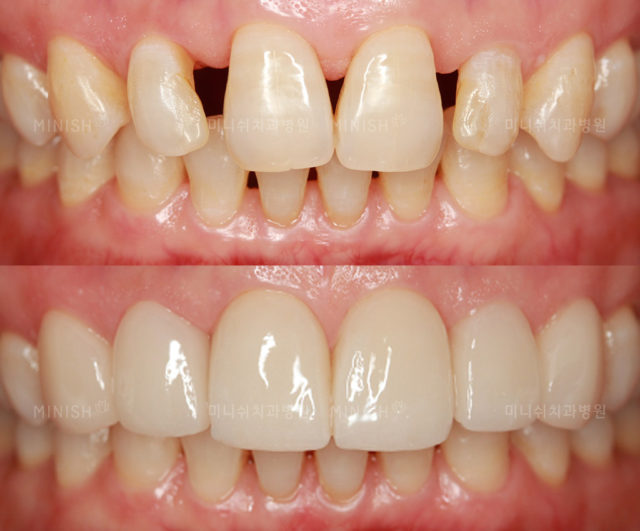
Impact on Health
Contrary to a common misconception, a gap between your front teeth doesn’t necessarily mean you have underlying dental issues. However, depending on its cause, it can sometimes indicate or lead to health problems:
- Oral Hygiene Challenges: Larger gaps can trap food particles, leading to plaque build-up, tooth decay, and gum disease, if not properly cleaned.
- Misalignment Issues: In some cases, the gaps can be a part of overall dental alignment issues, which can lead to improper bite. Improper bite can cause difficulties in chewing, speech problems, and even lead to Temporomandibular Joint Disorders (TMJ).
- Water Whistle Effect: In some people, the gap can cause “water whistle” while drinking liquid. The water rushing through the gap between the teeth can make a whistling sound and may cause discomfort.
- Speech Articulation: The gap, particularly in the upper front teeth, can cause problems with certain word articulations. Pronouncing words with “s” and “z” sounds (known as a lisp) can potentially be more difficult.
While the above points indicate potential health implications, it is essential to remember that not everyone with a gap between their front teeth will experience these issues. If you have a gap and it is causing you concern, the best course of action is always to consult a dental professional. They can guide you based on your individual circumstances, and if necessary, recommend treatment options, which could range from braces and aligners to dental bonding or veneers.
Non-Braces Solutions for Front Teeth Gap
A gap between the front teeth, technically referred to as diastema, is a common dental issue that can negatively impact one’s confidence and self-esteem. Traditions methods such as braces were often utilized to address this issue. However, braces come with several drawbacks such as time consumption, difficulty in maintenance, and discomfort. Realizing the need for simpler and more comfortable solutions, modern dentistry has developed several non-braces alternatives to bridge the gap between front teeth. The following are some of the effective non-braces solutions for front teeth gap:
Dental Bonding
Dental bonding is a procedure where a tooth-colored resin is applied to the teeth to improve their appearance. This is a quick, non-invasive, and cost-effective method that can effectively close the gap between the front teeth. The resin can be shaped and polished to match the surrounding teeth, providing a natural look.
Veneers
Veneers are thin, custom-made shells designed to cover the front surface of the teeth. They are made from porcelain or resin composite materials and are bonded to the teeth. Veneers are a bit more expensive than dental bonding, but they offer a long-lasting solution to the problem of a front teeth gap.
Dental Crowns
If your teeth require extensive full-scale treatment, we may proceed with crown treatment. Crown treatment is a stronger and more stable treatment than resin treatment, which is applied and hardened in a way that completely covers gaps between your teeth. However, it should be considered that the tooth molding process may lead to errors, unnecessary tooth deletion to secure more space for prosthodontics and that the damaged tooth surface (enamel) cannot be regenerated.
Teeth Effect Bands
Teeth effect bands are an inexpensive and easy-to-use home remedy for closing a gap between front teeth. The band works by applying steady pressure on the teeth which gradually brings them closer together. However, this method should be used with caution as incorrect application can lead to unwanted teeth movement or damage.
Clear Aligners
Invisalign is a modern alternative to traditional braces. These clear aligners are virtually invisible and can be removed for eating and cleaning. The treatment plan involves a series of custom-made aligners that gradually shift your teeth into place. However, Invisalign treatment may be more expensive and take longer than some other methods.
Composite Resin
It is a treatment that fills open spaces using resin, a material widely used for such treatment. We repeat the process of hardening by adding resin little by little, and because open spaces can be treated quickly by using dental fillings, the treatment can be done within a day on your first visit and the price of the treatment is affordable to most people.
However, during the filling and hardening process with heat, tooth cracks may appear in the treated area, and due to the nature of the material, there is a disadvantage of receiving another treatment again within just a few years due to the risk of tooth discoloration or the elimination of resin.
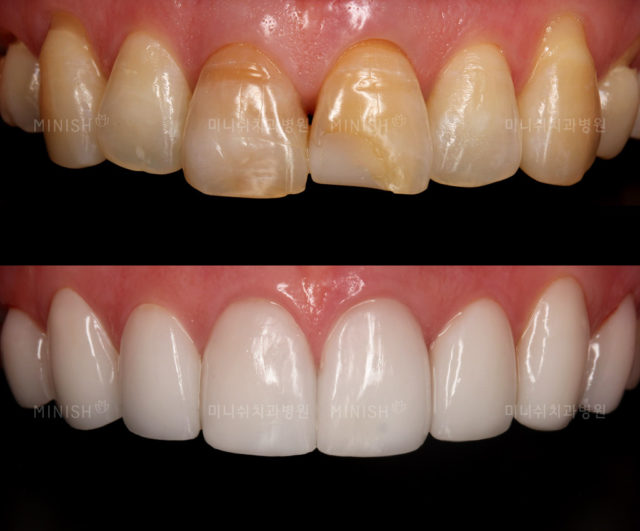
Each solution has its own strengths and is suited for different circumstances. The best choice varies depending on the individual’s specific condition, lifestyle, and budget. It is essential to consult a dental professional before making a decision.
Minish One-day Veneer Treatment
Minish Veneer is a kind of veneer Minish Dental Hospital is providing. The production & bonding process/restoration of eggshells with state-of-the-art technology. It restores damaged teeth and gums by filling in the damaged spaces with the material that is most similar to natural teeth without unnecessary tooth deletion.
In any case, the functional recovery of your teeth is possible without damaging your teeth, and at the same time, aesthetic recovery is possible to match the oral condition and overall facial harmony. They can also be managed after treatment in the same way as natural teeth.
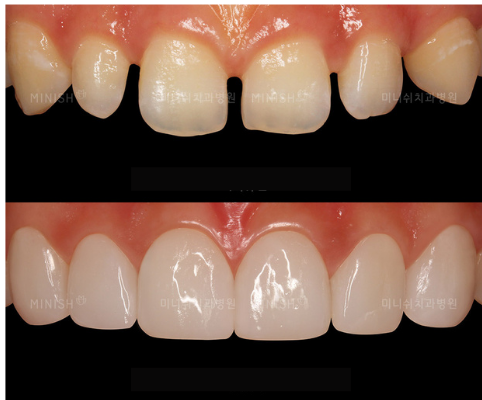
Elimination of frenulum labii maxillaris: First, the left and right gum lines that were not symmetrical at first are now in alignment. The periodontal sac, which can be the habitat of bacteria between teeth and gums, was removed to eliminate the source of gum disease. The overdeveloped frenulum labii maxillaris, which was the main cause of the gaps between teeth, is now partially removed and sealed up to make it look shorter.
Minish Veneer Treatment: We filled in all the spaces to form natural-looking teeth. We avoided damaging the natural teeth or utilizing prosthodontics. Instead, we filled in the enamel part with Minish treatment to restore and protect natural teeth at the same time. The broken teeth right next to the left front teeth have also been recovered, improving the overall shape of every tooth.
Treatment Process
- Organize only the contaminated and rough surfaces of the teeth (No anesthesia required)
- After making an impression of the teeth, design the tooth pattern that fits each individual. (You can consult the doctors and dental technicians to choose the design and color you desire.)
- Combine the design of Minish orthodontics with a suitable bonding material.
Benefits
- It is possible to recover the dental health of natural teeth weakened by damage and aging.
- It does not harm your teeth.
- It is a treatment that restores the strength of your teeth.
- Permanent use is possible depending on how the patient manages one’s teeth.
- It is aesthetically excellent and the results of treatment are natural.
- Treatment time is very short. Treatment is available on the first day of the visit.
Do I still need to receive treatment even if there is no problem with functionality?
If there are gaps between teeth, food may easily get stuck in between, affecting gum health. Also, the food stuck in those gaps may cause dental problems such as bad breath by creating an environment where bacteria can reproduce freely as well as aesthetic problems such as pronunciation problems.
Most of the patients who have visited us simply for aesthetic purposes have not had much damage to the enamel, the outer layer of their teeth. Minish Dental Hospital approaches such problems to the enamel layer differently, which is now recognized by academia.
Treatment to restore the properties of natural teeth not only allows the original natural teeth to be used for a long time, but also provides preventive effects to prevent dental problems in advance, reducing visits to the dentist in the future. Many people visit simply because of aesthetic problems, but Minish Dental Hospital takes various things into account, including dental health, aesthetic satisfaction, and the appearance and color of natural teeth.
Before After Images Gap In Teeth Treatment
Some individuals experience gaps in their teeth due to congenital development issues. Veneers offer a practical solution, aesthetically improving the smile by closing the gaps while also addressing any underlying structural abnormalities.

After orthodontic treatment, some gaps may still persist. Veneers can be used to fine-tune the results, ensuring a perfectly aligned and attractive smile. This step is particularly beneficial for patients whose orthodontic treatments have not fully closed the gaps.

As we age, our gums and teeth can undergo changes that create gaps. Veneers can effectively address these age-related issues by providing a uniform appearance and stabilizing the dental structure.

Some people complain of various inconveniences in their daily lives with the gaps between their teeth. They sometimes have to cover their mouths due to insecurities or even take selfies out in public. On top of the orthodontic treatment, the overdevelopment of frenulum labii maxillaris and gum disease must be dealt with at the same time, which could be limiting factors in correcting the gaps between teeth. Also, the treatment can narrow down the gap between teeth with braces (as shown above), but it may not improve the shape of the teeth in patients with square teeth.
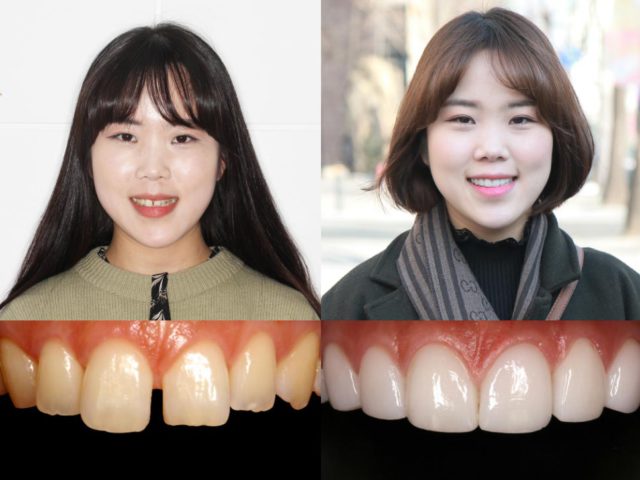
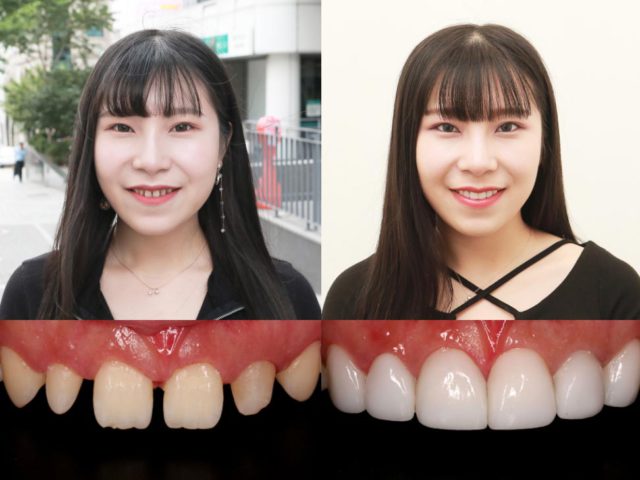
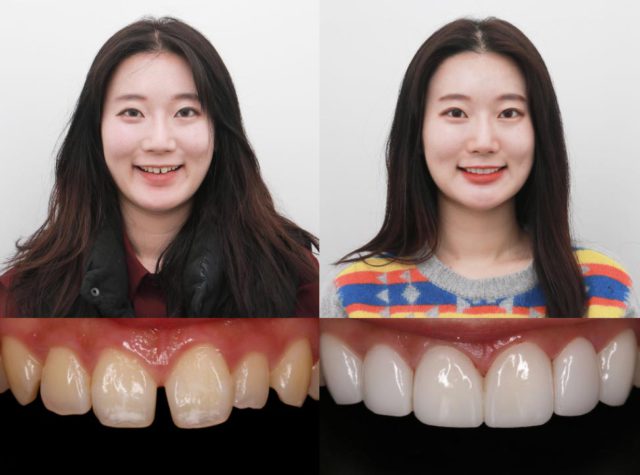
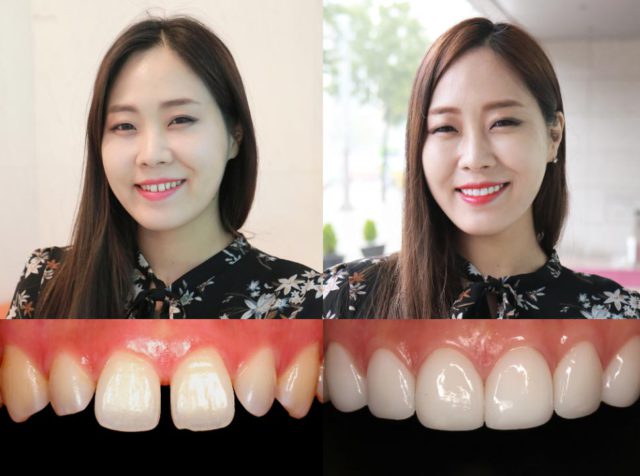
Conclusion
Have you experienced any discomfort today, such as problems with pronouncing words due to the gaps between teeth? By choosing the right treatment, you can easily recover your lost confidence and find your smile within a short period at Minish Dental Hospital.
Frequently Asked Questions
Various alternatives to braces are available for fixing front teeth gap. These include veneers which are thin shells fixed on the surface of the teeth, bonding where a resin is added to the teeth and polished to appear natural, and gap bands that pull the teeth closer.
Yes, some natural solutions for closing a teeth gap include using teeth gap bands done at home. However, these techniques are generally less effective and slower than professional treatments. Additionally, they carry a degree of risk, including teeth moving in the wrong direction and gum damage, so professional consultation is advised.
The effectiveness of alternatives largely depends on the size of the gap and the condition of the teeth. Veneers and bonding for instance have shown great outcomes for minor to moderate gaps. However, larger gaps may require more comprehensive treatments. Always consult with a dental professional to determine the best course of action.

